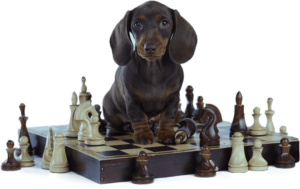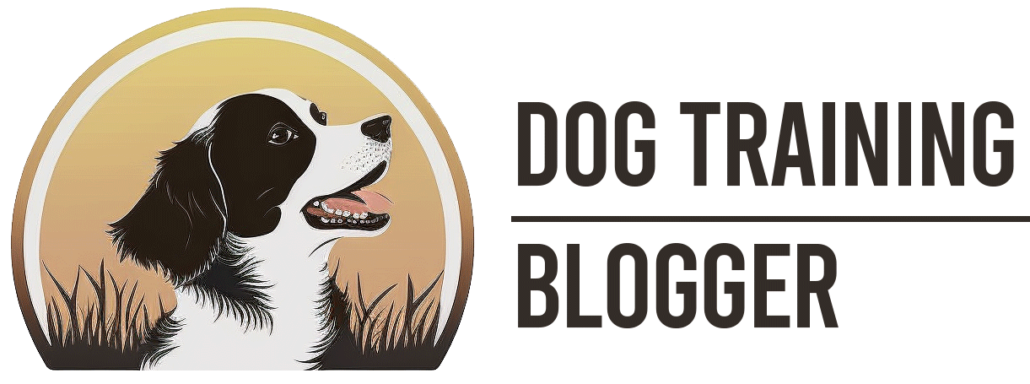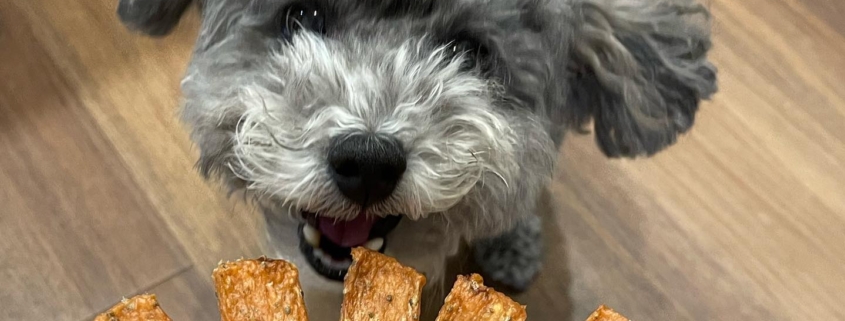The Role of Positive Reinforcement in Successful Dog Training
In this blog post, together we’ll dive into the world of positive reinforcement and explore its crucial role in successful dog training.
By the end of this (rather a long, in-depth one!), you’ll have a solid understanding of the science, types, timing, and balance of positive reinforcement to help you build a stronger bond with your canine companion.
As always I’ve done my best to simplify all concepts being discussed and if you have any questions just use the comments section at the bottom.
Let’s get started.
| Key Takeaways |
|---|
| Positive reinforcement is a science-backed, highly effective method for dog training that strengthens the bond between dogs and owners. |
| Various types of positive reinforcers can be used, including treats, toys, praise, and life rewards. |
| Proper timing and frequency of reinforcement are crucial for achieving long-lasting results in dog training. |
| Combining positive reinforcement with clear rules, discipline, and boundaries is essential for a well-rounded approach to dog training. |
The Science of Positive Reinforcement in Dog Training
Here we explore the science behind this highly effective dog training method, and how it works to teach your four-legged friend new behaviors while strengthening the bond between you.
Operant conditioning and its role in dog training
As an expert dog trainer, I can’t stress enough the importance of understanding the science behind effective dog training methods.
Operant conditioning, a learning theory developed by B.F. Skinner, is at the heart of positive reinforcement. It’s all about shaping your dog’s behavior by rewarding them when they perform a desired action, making it more likely that they’ll repeat it in the future.
We have a dedicated article on operant conditioning where you can learn more about this.
How positive reinforcement strengthens desired behaviors
Positive reinforcement works by tapping into your dog’s natural desire to please you.
When they perform a desired behavior and receive a reward, their brain releases feel-good chemicals like dopamine. This creates a positive association with the action, encouraging your dog to repeat it in anticipation of more rewards.
Studies and research that support the effectiveness of positive reinforcement
Numerous studies and research have shown that positive reinforcement is highly effective in dog training.
For instance, dogs trained with positive reinforcement techniques were more likely to retain the learned behaviors and had a lower likelihood of exhibiting fear or aggression. So, not only does positive reinforcement help your dog learn new skills, but it also contributes to their overall well-being!
Note: The full research paper is here.

Types of Positive Reinforcers: Treats, Toys, and Praise
There’s more to positive reinforcement than just stuffing your dog with treats!
There are various types of reinforcers you can use to reward your dog’s good behavior, including toys, praise, and even life rewards like going for a walk or playing outside.
Using treats as reinforcers
Treats are one of the most common and effective reinforcers in dog training. They’re easy to carry around, and most dogs love them! However, it’s essential to use treats wisely. Make sure to choose healthy options and avoid overfeeding. You can even break treats into smaller pieces to make them last longer during training sessions.
Incorporating toys and play as reinforcers
Toys and play can also serve as powerful reinforcers. Some dogs may be more motivated by a game of fetch or tug-of-war than a treat. Experiment with different toys and games to find what your dog loves the most!
Note: I am lucky, my own dog loves both, so when I run out of treats, a few moments of play has exactly the same effect
The power of praise and affection in reinforcing good behavior
Never underestimate the power of praise and affection!
A simple pat on the head, a belly rub, or an enthusiastic “Good boy!” (or girl!) can go a long way in reinforcing desired behaviors. Plus, it helps strengthen the bond between you both.
Tailoring reinforcers to your dog’s individual preferences
Every dog is unique, so it’s essential to tailor the reinforcers to your dog’s preferences.
Pay very close attention to their reactions and adjust your rewards accordingly. A highly personalized approach will make your training sessions more enjoyable and way more productive.
The Timing and Frequency of Positive Reinforcement
Timing is everything when it comes to positive reinforcement.
Here, we’ll uncover the importance of delivering rewards at just the right moment, as well as how often you should reinforce your dog’s behavior to ensure long-lasting results.
The importance of timing in reinforcement effectiveness
In dog training, timing is everything!
To maximize the effectiveness of positive reinforcement, be sure to reward your dog immediately after they perform the desired behavior. This will help your dog associate the reward with the action and reinforce the behavior more effectively.
The role of consistency in reinforcement schedules
Consistency is key when it comes to positive reinforcement.
Ensure you reward your dog every time they perform the desired behavior during the initial learning phase. As your dog becomes more proficient, you can gradually
Using variable reinforcement schedules to maintain learned behaviors
As your dog becomes more proficient in a specific behavior, you can gradually transition to a variable reinforcement schedule. This means rewarding your dog less consistently and more randomly for performing the desired behavior.
Doing so helps maintain the learned behavior, as your dog will continue to perform the action in anticipation of an occasional reward.

Balancing Positive Reinforcement with Discipline and Boundaries
Positive reinforcement isn’t the only ingredient for successful dog training.
In this section, we’ll look into the importance of establishing clear rules and boundaries, and how to address undesired behaviors without undermining the power of positive reinforcement.
The need for clear rules and boundaries in dog training
While positive reinforcement is highly effective in teaching your dog new behaviors, it’s equally important to establish clear rules and boundaries. Consistent expectations help your dog understand what is and isn’t allowed, ensuring a harmonious household.
Strategies for addressing undesired behaviors without undermining positive reinforcement
When your dog exhibits undesired behaviors, it’s essential to address them without undermining the positive reinforcement approach.
Instead of punishing your dog, try redirecting their attention to an appropriate behavior or using a “time-out” technique to interrupt the unwanted action.
Combining positive reinforcement with other training techniques for a well-rounded approach
A well-rounded approach to dog training combines positive reinforcement with other techniques such as “lure and reward” or “capturing” a behavior.
By incorporating a variety of methods, you can effectively teach your dog various skills and commands while maintaining a positive and enjoyable training experience.
And Finally
Positive reinforcement has the power to transform not only your dog’s behavior but also your relationship with them.
By focusing on rewarding good behavior and strengthening the bond between you and your four-legged friend, you’ll create a happy, well-adjusted companion that’s a joy to be around.
Positive reinforcement is a crucial element in successful dog training. By understanding the science behind it and utilizing treats, toys, praise, and proper timing, you can effectively teach your dog new behaviors while strengthening your bond.
Remember to be patient and consistent in your approach, and don’t forget to have fun along the way (that’s key!)
Frequently Asked Questions
Here are the answers to the common questions about positive reinforcement in relation to dog training.
- Q: Why is positive reinforcement important in dog training?
A: Positive reinforcement is important in dog training because it helps dogs learn desired behaviors more effectively, creates a positive association with the behavior, and contributes to their overall well-being. - Q: What is positive reinforcement for dog training?
A: Positive reinforcement is a training method that involves rewarding a dog immediately after they perform a desired behavior, making it more likely they’ll repeat the action in the future. - Q: Do dogs understand positive reinforcement?
A: Yes, dogs understand positive reinforcement as they naturally want to please their owners, and rewarding them for desired behaviors creates a positive association with those actions. - Q: Do dogs learn better with positive or negative reinforcement?
A: Research shows that dogs learn better with positive reinforcement, as it fosters a stronger bond between the dog and the owner and reduces the likelihood of fear or aggression in the learning process. - Q: Why is positive reinforcement important?
A: Positive reinforcement is important because it helps build a stronger bond between the dog and the owner, encourages desired behaviors, and contributes to the dog’s overall well-being. - Q: Can you train a dog with only positive reinforcement?
A: While positive reinforcement is highly effective, it’s important to also establish clear rules and boundaries for a well-rounded approach to dog training. - Q: How effective is positive reinforcement?
A: Positive reinforcement is very effective in dog training, with numerous studies showing improved retention of learned behaviors and reduced likelihood of fear or aggression. - Q: What are some examples of positive reinforcement?
A: Examples of positive reinforcement include giving treats, toys, praise, and affection to reward desired behaviors. - Q: What is the difference between positive reinforcement and correction in dog training?
A: Positive reinforcement focuses on rewarding desired behaviors, while correction involves addressing undesired behaviors, often through redirection or time-outs. - Q: What is strategic reinforcement in dog training?
A: Strategic reinforcement involves carefully planning and delivering rewards during training to maximize their effectiveness in shaping desired behaviors. - Q: What is an example of positive and negative reinforcement in dog training?
A: Positive reinforcement might involve giving a treat for sitting on command, while negative reinforcement could involve removing pressure on a dog’s leash when they stop pulling. - Q: What are the 4 types of reinforcement?
A: The four types of reinforcement in operant conditioning are positive reinforcement, negative reinforcement, positive punishment, and negative punishment. - Q: What is the importance of reinforcing training?
A: Reinforcing training is important to help dogs retain learned behaviors, strengthen the bond with their owner, and create a positive learning environment.
Brain Training For Your Dog




